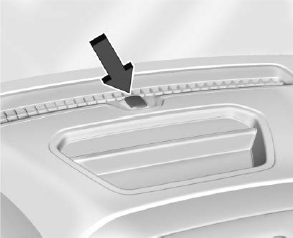Chevrolet Silverado: Wheels and Tires / Wheel Replacement
Replace any wheel that is bent, cracked, or badly rusted or corroded. If wheel nuts keep coming loose, the wheel, wheel bolts and wheel nuts should be replaced. If the wheel leaks air, replace it. Some aluminum wheels can be repaired. See your dealer if any of these conditions exist.
Your dealer will know the kind of wheel that is needed.
Each new wheel should have the same load-carrying capacity, diameter, width, offset and be mounted the same way as the one it replaces.
Replace wheels, wheel bolts, wheel nuts, or Tire Pressure Monitor System (TPMS) sensors with new GM original equipment parts.
Warning
Using the wrong replacement wheels, wheel bolts, or wheel nuts can be dangerous. It could affect the braking and handling of the vehicle. Tires can lose air, and cause loss of control, causing a crash. Always use the correct wheel, wheel bolts, and wheel nuts for replacement.
Caution
The wrong wheel can also cause problems with bearing life, brake cooling, speedometer or odometer calibration, headlamp aim, bumper height, vehicle ground clearance, and tire or tire chain clearance to the body and chassis.
Whenever a wheel, wheel bolt, or wheel nut is replaced on a dual wheel setup, check the wheel nut torque after 160,1 600, and 10 000 km (100,1,000, and 6,000 mi) of driving. For proper torque, see “Wheel Nut Torque” under Capacities and Specifications.
See If a Tire Goes Flat for more information.
Used Replacement Wheels
Warning
Replacing a wheel with a used one is dangerous. How it has been used or how far it has been driven may be unknown. It could fail suddenly and cause a crash. When replacing wheels, use a new GM original equipment wheel.
 Uniform Tire Quality Grading
Uniform Tire Quality Grading
The following information relates to the system developed by the United States
National Highway Traffic Safety Administration (NHTSA), which grades tires by treadwear,
traction, and temperature performance...
 Tire Chains
Tire Chains
Warning
If the vehicle has LT275/65R18, 275/60R20, LT275/65R20, or 275/50R22 size
tires, do not use tire chains. If the vehicle is a 1500 Series with LT265/70R17
size tires, do not use tire chains...
Other information:
Chevrolet Silverado 2019-2025 Owners Manual: Heated Rear Seats
Warning If you cannot feel temperature change or pain to the skin, the seat heater may cause burns. See the Warning under Heated and Ventilated Front Seats. If available, the buttons are on the rear of the center console. To operate, the engine must be running...
Chevrolet Silverado 2019-2025 Owners Manual: Speedometer, Odometer & Trip Odometer
Speedometer The speedometer shows the vehicle's speed in either kilometers per hour (km/h) or miles per hour (mph). Odometer The odometer shows how far the vehicle has been driven, in either kilometers or miles. Trip Odometer The trip odometer shows how far the vehicle has been driven since the trip odometer was last reset...
Categories
- Manuals Home
- 4th Generation Silverado Owners Manual
- 4th Generation Silverado Service Manual
- Steering Column Lock
- Power Seat Adjustment
- Universal Remote System Programming
- New on site
- Most important about car
Vehicle Alarm System

The indicator light, on the instrument panel near the windshield, indicates the status of the system.
